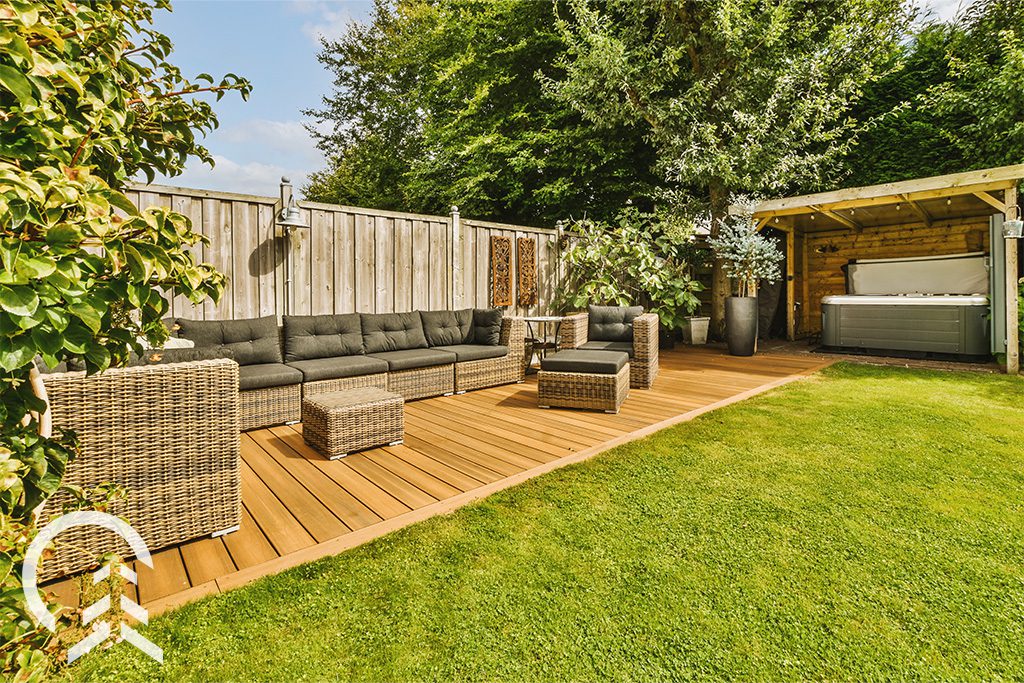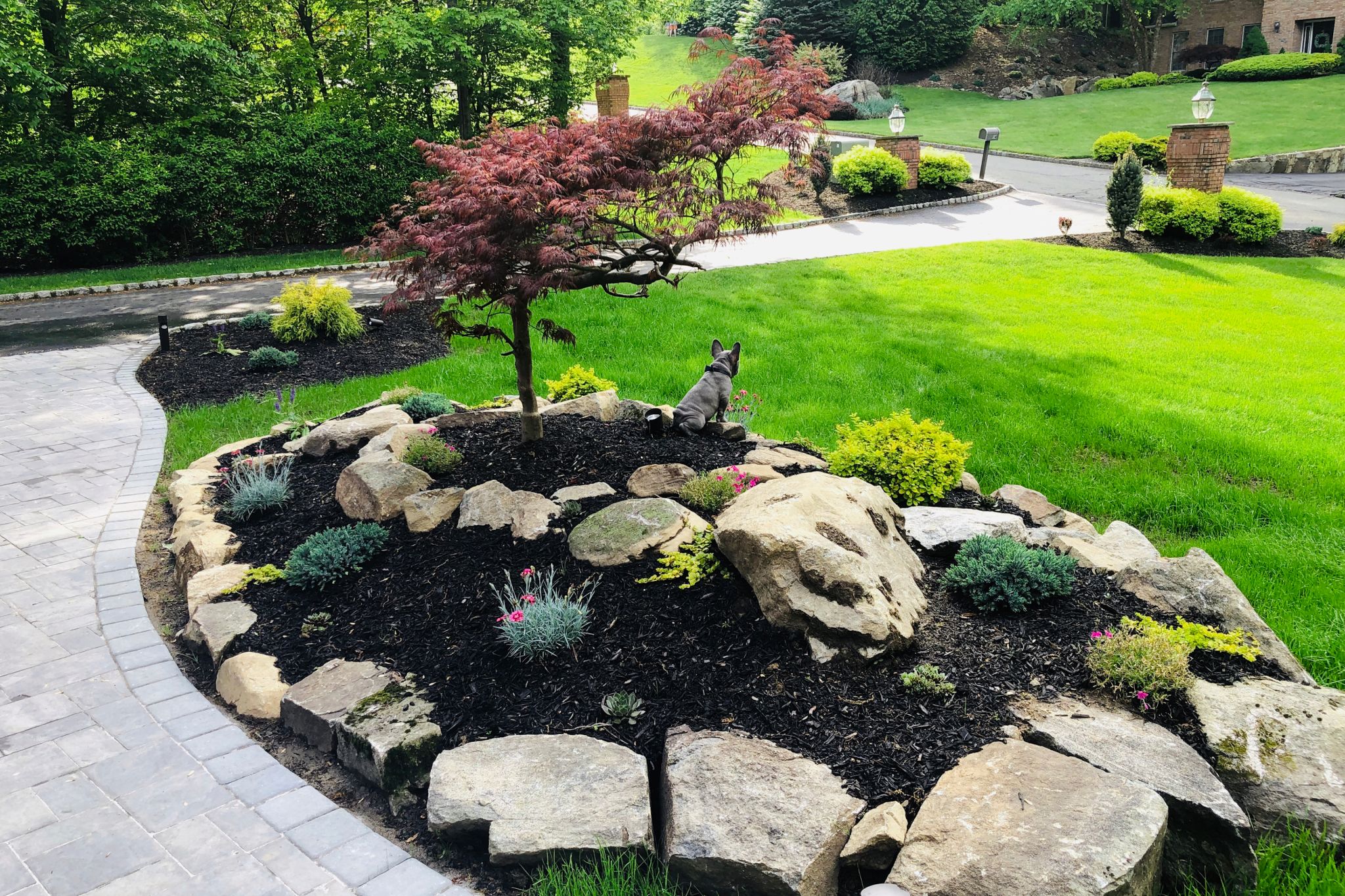Transform Your Yard With Ingenious Landscape Design Ideas and Strategies
Changing a garden calls for thoughtful consideration of its unique attributes. Effective landscape Design can boost both capability and aesthetic charm. By exploring numerous strategies, one can create an area that not only reflects individual design but also sustains local biodiversity. As the trip unfolds, questions regarding plant choice, sustainability, and format develop, prompting a much deeper exploration right into exactly how to make these ideas revive.
Evaluating Your Outdoor Area: Understanding Your Garden's Possible
Assessing exterior room is crucial for effective landscape layout. Comprehending the one-of-a-kind characteristics of a garden enables designers to optimize its capacity. Elements such as dirt high quality, sunshine exposure, and existing structures play an essential duty in establishing what can be attained. Assessing the topography aids identify areas for planting, paths, or water functions, while keeping in mind water drainage patterns ensures that plants grow without waterlogging.
Moreover, recognizing the garden's microclimates can affect plant selection and positioning. Observing how the space is used by citizens educates useful Design choices, such as seating areas or play zones. Furthermore, considering the surrounding setting and neighboring landscapes can give inspiration and context for Design choices. By thoroughly examining these components, one can develop a natural and welcoming outdoor area that mirrors the proprietor's vision while balancing with nature. Ultimately, a complete assessment lays the groundwork for a successful landscape Design task.
Picking the Right Plants: An Overview to Color, Texture, and Seasonal Rate of interest
When picking plants for a landscape layout, recognizing the interaction of color, structure, and seasonal interest is crucial for creating a vibrant and dynamic garden. Color can stimulate emotions and established the tone for the area; subsequently, selecting a harmonious palette enhances visual allure. Warm tones like reds and oranges produce power, while cooler tones like blues and environment-friendlies provide harmony.
Texture includes depth and dimension, enabling a mix of vegetation forms and sizes. Combining fine-textured plants with bold-leaved varieties creates contrast and intrigue.
Seasonal rate of interest is very important for preserving year-round beauty. Choosing a selection of plants that flower in various periods assurances that the yard continues to be dynamic, shifting from springtime's vivid blossoms to fall's rich foliage. By attentively thinking about these elements, one can curate a landscape that is not just cosmetically pleasing yet appealing and additionally diverse throughout the year.

Producing Practical Zones: Creating Spaces for Relaxation and Amusement
Developing practical areas in a landscape Design improves the usability of outdoor areas, permitting homeowners to seamlessly blend leisure and home entertainment. By thoughtfully separating areas right into distinctive zones, individuals can cater to different activities, from quiet retreats to dynamic events. A properly designed room may include a comfortable reading nook nestled amongst rich plant, giving a serene escape (Landscaping Contractor). On the other hand, a vibrant outside eating area can function as the perfect setup for events with friends and family
Strategically positioned pathways can lead guests in between these areas, making sure very easy navigation. Additionally, including components like seating locations, fire pits, or water features can improve the total ambiance and performance. The assimilation of different structures and colors in each area can develop visual passion while maintaining a cohesive visual. Inevitably, creating useful areas enables home owners to maximize their outdoor experience, changing their yards right into functional rooms that satisfy varied way of living demands.
Integrating Hardscape Elements: Patios, Walkways, and Focal Details
Including hardscape elements right into landscape Design complements functional zones by giving structure and visual charm. Patios function as essential outdoor living rooms, enabling house owners to delight in dishes and celebrations in a defined location while improving accessibility. The selection of products, such as all-natural stone or concrete, can considerably affect the total visual, mixing flawlessly with the surrounding environment.
Walkways promote motion via the garden, assisting site visitors while adding deepness and passion. These paths can be crafted from various materials, consisting of crushed rock, pavers, or brick, each adding to the yard's character.
Focal factors, such as ornamental stones, sculptures, or water features, attract the eye and produce a feeling of purpose within the landscape. Purposefully placed, these aspects can transform a common yard into an appealing room, inviting exploration and interaction. Through thoughtful combination of hardscape, a landscape ends up being not just functional but additionally aesthetically stunning.
Enhancing Privacy and Safety And Security: Natural Barriers and Frameworks
To boost personal privacy and protection in landscape design, making use of all-natural obstacles such as thick hedges can properly shield a building from undesirable sights. Additionally, setting up personal privacy fencings gives a strong framework that adds to a sense of safety and security and seclusion. Together, these elements develop a more intimate outside room while preventing possible breaches.
Planting Dense Hedges
While many homeowners seek aesthetic appeal in their landscapes, growing dense bushes serves a dual purpose of improving privacy and security. These natural barriers create a visual shield, properly obstructing the view from spying eyes and deterring possible intruders. Various species, such as boxwood, holly, or privet, can be selected for their development patterns and vegetation density, ensuring rich insurance coverage throughout the year. Additionally, properly maintained bushes can contribute to a tranquil environment, taking in noise and providing a habitat for wild animals. The tactical positioning of these bushes can define residential or commercial property boundaries and develop secluded outdoor areas, allowing property owners to enjoy their yards with a sense of security. Ultimately, dense bushes are an effective remedy for blending charm with performance.
Setting Up Personal Privacy Fences
Privacy fencings work as an additional effective technique for enhancing personal privacy and safety and security in household landscapes. These frameworks not only mark residential or commercial property boundaries however also create a sense of privacy, shielding property owners from prying eyes. Numerous products, such as timber, metal, and vinyl, deal distinctive aesthetics and levels of toughness, permitting homeowners to choose based on their Design preferences and upkeep demands.

Lasting Landscape Design: Eco-Friendly Practices for a Greener Yard
Lasting landscape design highlights the relevance of indigenous plant selection and water preservation techniques. By selecting plants that are well-adapted to the neighborhood atmosphere, gardeners can decrease maintenance and source usage. Executing reliable sprinkling methods further enhances the garden's eco-friendly benefits, promoting a healthier environment.
Native Plant Option
Indigenous plant selection plays a necessary duty in lasting landscaping, promoting biodiversity and lowering the need for chemical inputs. By picking plants indigenous to a details area, gardeners can produce habitats that support regional wildlife, such as pollinators, birds, and helpful bugs. These plants are adjusted to the local environment and dirt problems, calling for much less water and upkeep compared to non-native varieties. Additionally, indigenous plants can aid manage disintegration and enhance dirt wellness, cultivating a well balanced ecosystem. Including indigenous varieties into landscape makes not just enhances the visual charm of the yard but additionally adds to ecological resilience. Inevitably, indigenous plant selection is a vital strategy for those seeking to grow a sustainable and dynamic garden.
Water Preservation Techniques
Including indigenous plants can significantly boost water conservation initiatives in landscape design. These plants are well-adapted to neighborhood climates, needing much less water and maintenance than non-native ranges. Carrying out drip watering systems enables targeted watering, minimizing dissipation and runoff. Rainwater collecting systems can likewise be mounted, collecting and storing rain for garden use. Mulching aids maintain dirt wetness, minimizing the regularity of watering. Grouping plants with similar water requires with each other creates reliable sprinkling zones, better saving water. In addition, utilizing permeable materials for pathways permits rain to seep into the ground, restoring groundwater products. By using these water conservation strategies, gardeners can develop sustainable landscapes that thrive while decreasing ecological impact (Artificial Grass). Such methods contribute to a greener garden and a healthier community
Customizing Your Layout: Adding Special Attributes and Personal Touches
How can one transform a garden into an individual haven? Customizing a landscape Design entails integrating special functions that reflect specific preferences and lifestyles. One technique is to include tailored garden art, such as sculptures or handcrafted birdhouses, which can act as focal points and conversation starters. Additionally, personalizing plant options based upon seasonal blooms or individual preferences can produce a dynamic and developing space.
Creating useful areas, such as a relaxing reading nook or an outside eating area, can boost functionality and convenience. Moreover, including components like a fire pit or a water function can present a welcoming setting.
Shade textures, materials, and plans must line up with the property owner's design, whether it be modern-day, rustic, or diverse. Ultimately, the goal is to create a space that reverberates with the person's identification, making the yard not simply a visual delight however a useful source real extension of the home owner's personality.
Often Asked Inquiries
How Do I Budget for a Landscape Design Job?
To allocate a landscape Design job, one ought to analyze task range, research costs for materials and labor, prioritize attributes, and assign an additional 10-20% for unanticipated expenditures, guaranteeing a reasonable monetary strategy.
What Devices Are Vital for Home Yard Landscaping?
Vital tools for home garden landscape design consist of a shovel, rake, garden fork, pruning shears, trowel, hoe, and wheelbarrow. These instruments aid in dirt prep work, planting, maintenance, and reliable transport of products throughout the landscape design project.
Just How Can I Keep My Yard After Upgrading?
To maintain an upgraded garden, regular watering, mulching, weeding, and pruning are necessary (Landscaping Contractor). Monitoring plant wellness, adjusting dirt nutrients, and seasonal plant treatment add to a thriving setting that showcases the garden's brand-new Design successfully
When Is the most effective Time to Start Landscaping?

Can I DIY My Landscape Design or Should I Work with an Expert?
Individuals can certainly DIY their landscape Design if they have creative thinking and standard abilities; however, hiring a specialist typically guarantees an extra natural and expert result, particularly for complicated projects or specific Design goals.
Identifying the yard's microclimates can influence plant selection and placement. When picking plants for a landscape design, comprehending the interplay of color, structure, and seasonal rate of interest is crucial for creating a dynamic and vibrant yard. Selecting a variety of plants that grow in various seasons assurances that the garden remains lively, moving from springtime's lively flowers to autumn's abundant foliage. Integrating a knockout post indigenous varieties right into landscape develops not only boosts the aesthetic charm of the yard but also adds to environmental resilience. Important tools for home yard landscape design consist of a shovel, rake, yard fork, pruning shears, hoe, wheelbarrow, and trowel.